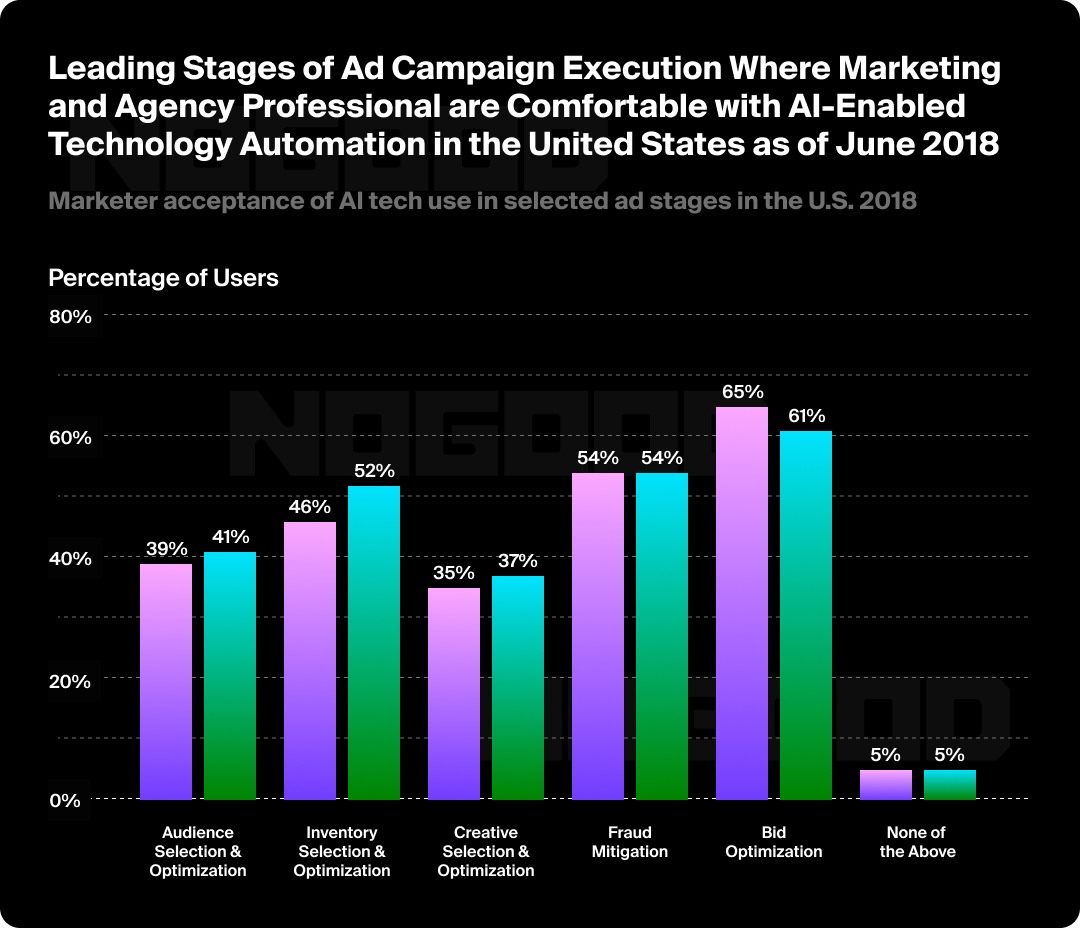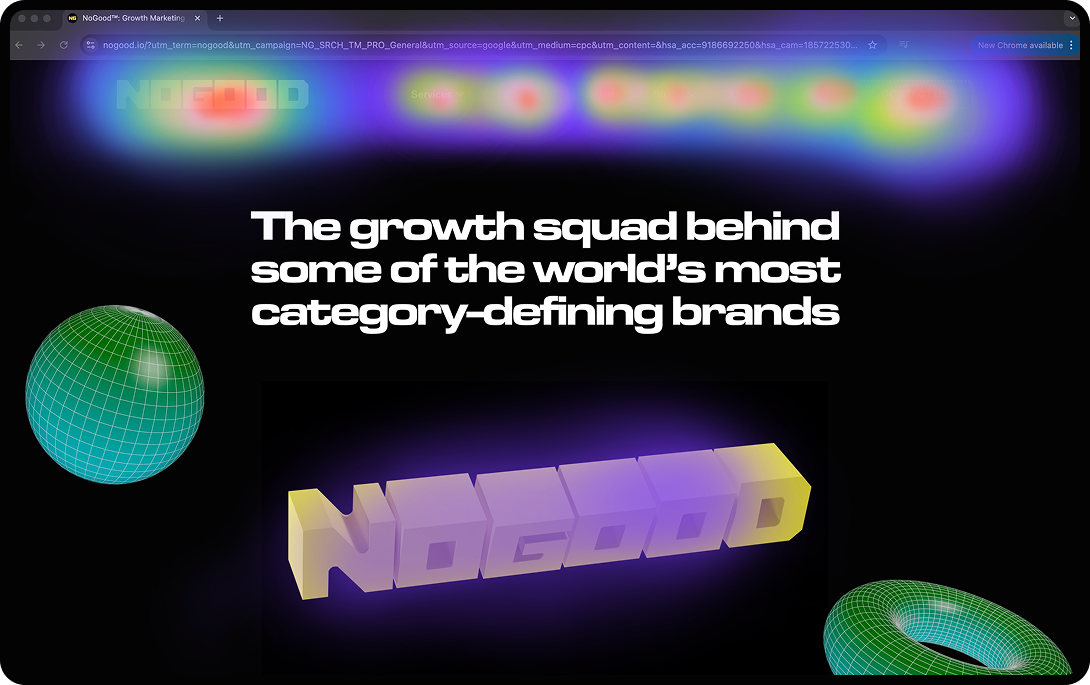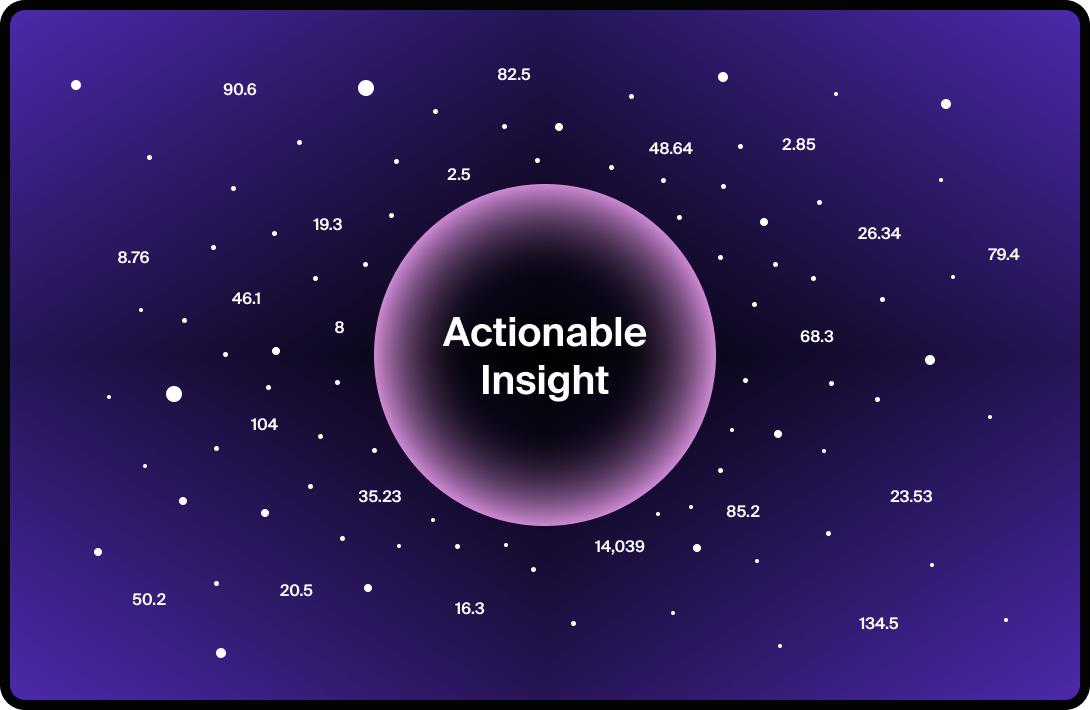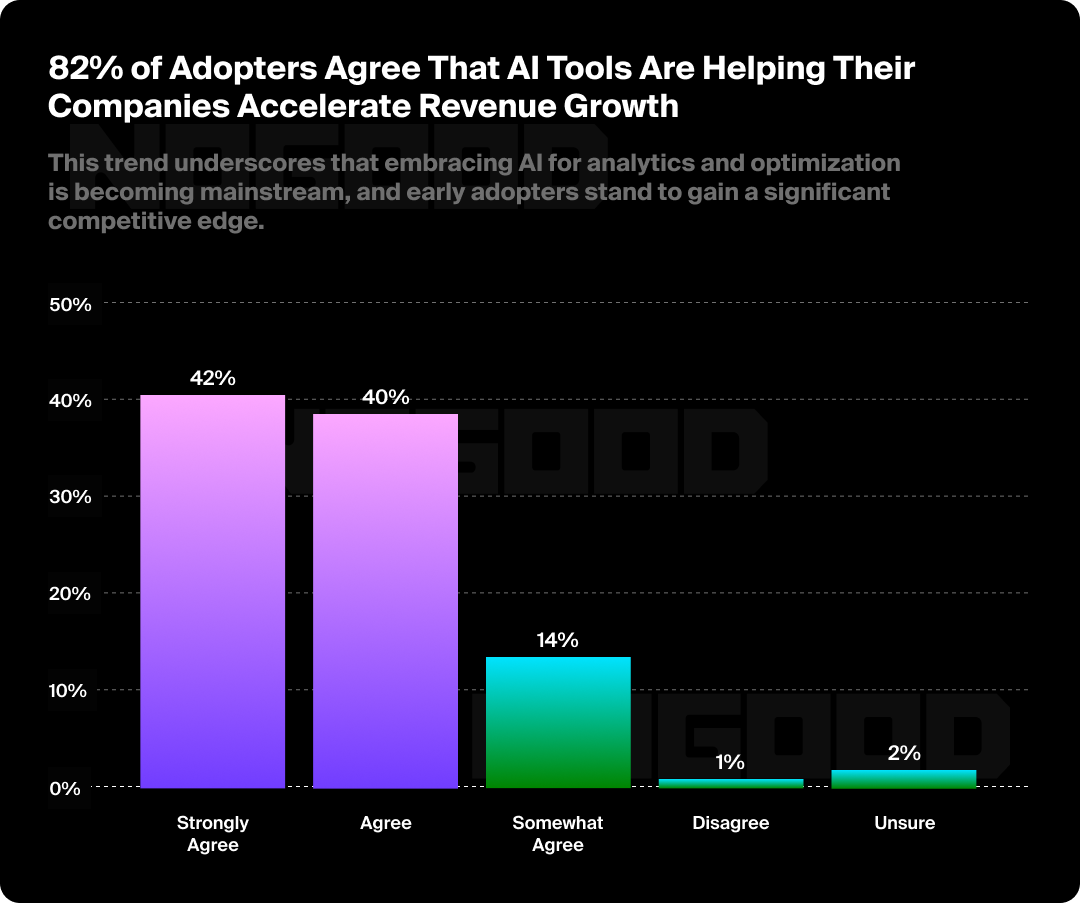Staying competitive in digital marketing isn’t just driving traffic; it’s converting that traffic into customers. In an era of information overload and fleeting attention spans, marketers are discovering how to boost conversions with AI analytics that personalize each customer’s experience in real time.
Conversion rate optimization (CRO) has always been about systematically improving the user journey to increase the percentage of visitors who complete desired actions (your conversion goals, like purchases or sign-ups). Now, artificial intelligence is transforming CRO into a dynamic, continuously learning process. As NoGood’s Director of Analytics puts it:
“AI is turning CRO into a living, learning system; personalizing experiences in real time, predicting what converts, and automating optimization at scale.”
In other words, AI tools can analyze vast troves of user data instantaneously and adapt your website on the fly to better meet each visitor’s needs; a game-changer for conversion rate optimization.
From reducing bounce rates by delivering content that truly resonates to leveraging predictive models that anticipate user behavior, AI provides marketers with an unprecedented ability to tune every touchpoint for maximum impact. Now, let’s examine the strategies, tools, and insights that can elevate your conversion rate optimization to the next level.
From Data to Action: The Need for Real-Time AI Personalization
The modern consumer expects personalized experiences at every turn. If a website feels irrelevant or hard to navigate, they won’t hesitate to leave. This contributes to high bounce rates and lost sales. Traditional analytics can tell you what happened in the past, but real-time AI analytics can act in the moment to prevent lost conversions.
By analyzing user behavior as it occurs through clicks, scrolls, time on page, etc., AI systems can tailor the experience on-the-go. This might mean dynamically changing content, offering a timely discount, or highlighting a more relevant call-to-action before a user bounces. The result is a smoother journey that keeps potential customers engaged.
AI personalization works by leveraging predictive analytics on user data to determine the best content or product to show each visitor. For example, Amazon’s AI-driven recommendation engine, Rufus, analyzes your browsing and purchase history and then suggests products you’re likely to buy, a strategy that drives a stunning 35% of Amazon’s annual sales.
Overall, studies show that businesses using AI analytics can increase conversion rates by as much as 20%. AI tools achieve this by mining patterns (ones that humans might miss) from large datasets, uncovering insights into what different user segments respond to. This then enables real-time action. If the data predicts that a certain visitor is interested in feature A more than feature B, AI will emphasize A to better appeal to that visitor.
In short, real-time AI personalization turns your data into immediate action, creating a continuously optimized user experience. In the next sections, we’ll detail exactly how these AI-driven strategies boost sales and what you can do to increase your own conversion rates.
How Can AI Boost Sales & Conversion Rates?
AI contributes to revenue growth in digital marketing by attacking the problem from distinct angles; at the most basic level, boosting your conversion rates directly increases sales. AI helps achieve this by making your marketing smarter at every step of the customer journey. Here are several key ways AI drives more conversions and sales:
- Hyper-Personalized Recommendations: AI analyzes user behavior data to recommend the most relevant products or content to each user. This increases average order values and conversion rates because customers are more likely to see something they want. By showing the right product at the right time, AI upsells and cross-sells far more effectively than generic suggestions.
- Predictive Targeting: Instead of treating all prospects alike, AI can predict which visitors are most likely to convert. These predictive analytics allow marketers to focus efforts on high-intent leads and tailor offers specifically to them.
- Reducing Friction & Bounce Rates: AI can identify friction points in real time and mitigate them. For instance, AI tools can detect if users hesitate at a form field or struggle to find information. By addressing issues before the user gives up, AI keeps more visitors moving forward.
- Optimizing Pricing & Offers: AI systems can even help maximize sales through dynamic pricing and offer optimization. By reviewing purchase data and other external factors, AI can adjust product prices or trigger special offers to hit the sweet spot that converts a hesitant customer. This strategy is commonly used in industries like travel and retail, for example, when AI adjusts airline ticket prices or hotel rates based on changes in demand.
- Improving Ad Targeting & ROI: Beyond on-site conversions, AI boosts sales by making traffic acquisition more efficient. AI ad platforms optimize bids and targeting in real time, focusing your budget on audiences most likely to buy.
AI boosts sales by supercharging conversion rate optimization. From attracting the right visitors with precision targeting, to engaging them with personalized experiences that reduce bounce rates, to closing the sale with timely recommendations and seamless checkouts. It’s not magic; it’s about using data-driven intelligence to make every marketing interaction more relevant and efficient.

AI-Powered Personalization: Tailoring Experiences to Each User
One of the most powerful applications of AI in conversion optimization is the ability to deliver personalized experiences at scale. We’ve all experienced static websites that show the same content to everyone; and we’ve also likely lost interest when it wasn’t what we were looking for.
AI personalization solves this by dynamically adjusting content, layout, and messaging for each individual user or segment in real time. The result is that visitors feel the site is speaking directly to their needs, which dramatically increases engagement and conversion likelihood.
Suppose a user is browsing an apparel site and frequently looks at running shoes. A traditional site might show generic products, but an AI-personalized site would quickly learn this user’s real interest and start highlighting running shoe deals, showing testimonials from runners, or even reordering the page to put running gear front and center.
AI personalization extends beyond just product recommendations, though. Artificial intelligence can customize virtually any element of the experience, for example:
- Content & Messaging: AI systems can swap out headlines, copy, or images based on user attributes. A first-time visitor might see a value proposition explainer, while a returning customer sees a discount offer or content related to their past purchases.
- Layout & Navigation: AI can analyze aggregated user behavior to identify distinct navigation patterns among different user segments. For instance, mobile users browsing tech products might favor a search-driven interface, whereas desktop users may prefer category menus.
- Timing & Triggers: AI can determine the optimal timing for prompts. AI systems might show an exit-intent pop-up with a special offer at the exact moment a user is about to bounce.
Predictive Analytics & Understanding User Behavior
Predictive analytics is another pillar of AI with huge implications for conversion optimization. Traditional analytics tell you what users did in the past. Predictive analytics uses AI and machine learning to forecast future user behavior.
By crunching historical and real-time data, AI tools can identify patterns and probabilities. It essentially reads the digital body language of your customers to anticipate what they might do next. This foresight allows marketers to be proactive in optimizing conversions, rather than reactive.
Identifying User Intent
One area where predictive analytics shines is in understanding user intent. For example, AI can analyze a combination of signals: the sequence of pages a visitor views, the time spent, the items clicked, their demographic data, etc.
This intent data then triggers different experiences: a user showing high purchase intent might see a “limited-time offer” urgency message to push them over the line, whereas a casual browser might be nurtured with informational content or an option to sign up for a newsletter.

Using Predictive Heatmaps
A concrete example is predictive attention insights. Tools like Dragonfly AI and Attention Insight simulate or predict where users’ eyes and cursor will gravitate on a page. These predictions help you optimize page design before even running an A/B test. If the AI “attention heatmap” shows that an important call-to-action button is likely being overlooked due to poor placement or too little contrast, you can fix that proactively.
Companies leveraging predictive insights can ensure that key elements like CTAs, product images, and value propositions are positioned where users will notice them: strategic page structuring aligns high attention areas with conversion objectives, boosting conversion rates.
Spotting Conversion Roadblocks
Predictive analytics also helps identify conversion roadblocks that might not be as obvious. AI can analyze thousands of user sessions to discover a pattern, for example, users coming from a certain traffic source consistently dropping off at Step Two of your signup process. With traditional analysis, you might not have spotted the correlation; AI can flag it.
Churn Prediction & Retention
Another predictive capability is churn prediction and retention, which is especially relevant for subscription or SaaS businesses. AI models can often predict when a user or customer is likely to drop off or not return. Marketers can then intervene with retention campaigns or special offers to re-engage those users before they churn. Preventing churn is as good as gaining a conversion in many cases, since retaining an existing user often translates to recurring revenue.
Forecasting Campaign Performance
More broadly, predictive models assist in forecasting campaign outcomes. For example, AI can analyze prior campaign data and current lead quality to forecast how many conversions a new campaign might drive or which customer segment will yield the highest lifetime value. These insights allow you to allocate budget and resources more effectively to boost overall conversion volume and sales.
The Bottom Line
Predictive analytics turbocharges your understanding of user behavior by moving from descriptive to predictive. This helps you optimize the user experience proactively.
Instead of waiting to see a dip in conversions and then scrambling to diagnose it, you can use AI to foresee issues and opportunities. Marketers who harness predictive analytics in their CRO efforts can tackle problems like poor engagement or unclear CTAs before they cost conversions, and seize opportunities like high-intent micro-segments by giving them extra attention. In doing so, they achieve higher conversion rates with less guesswork.
AI tools excel at devouring large data sets and pinpointing patterns, then turning those insights into actionable optimizations much faster than any human analyst could. That speed and foresight is a decisive advantage in conversion rate optimization.
AI in Marketing Analytics & Decision-Making
We’ve focused on on-site conversions and immediate user interactions. However, AI’s role in marketing analytics at large is also pivotal in boosting conversions and guiding strategy.
Marketing analytics involves tracking and interpreting data across campaigns, channels, and customer touchpoints; an area tailor-made for AI’s data-crunching prowess. Here’s how AI contributes to marketing analytics and why that matters for conversion optimization:
Holistic Data Integration
Modern marketing can generate overwhelming amounts of data. AI can help integrate and analyze these disparate data sources to provide a 360° view of the customer journey. For example, AI-powered analytics platforms might pull in data from Google Analytics, your CRM, and ad platforms to correlate how a user moves from an ad click to website behavior to eventual conversion.
Advanced Segmentation & Personalization at Scale
In the analytics realm, AI can automatically segment your audience based on behaviors and likelihood to convert. Traditional analytics might allow you to segment by known attributes (device, location, etc.), but AI can find hidden segments (“micro-segmentation”) by clustering users with similar patterns. You might discover, for example, a cluster of users who visit late at night and respond to social proof elements, versus another cluster that always compares pricing and responds to discounts.
Predictive Marketing Metrics
We’ve already talked about predictive analytics for user behavior; similarly, AI can predict higher-level marketing outcomes. It can forecast metrics like customer lifetime value (CLV) for different customer cohorts, or predict how conversion rates will trend in the next quarter given current campaigns.
A notable application here is for budget allocation: AI-driven marketing mix modeling can suggest how shifting spend between channels might improve overall conversions and sales, something that is very hard to do manually due to all of the interdependencies.
Real-Time Alerts & Anomaly Detection
In marketing analytics, catching problems early is crucial. AI excels at detecting anomalies in data. If your conversion rate suddenly drops on one of your sites or campaigns, an AI monitoring tool can send an alert immediately (and even identify likely causes, like “landing page loading slowly” or “recent change in ad targeting”).
This allows marketers to respond quickly, fixing a broken link or pausing a misperforming campaign before opportunities are lost. Conversely, if an A/B test variation is performing significantly better, AI can flag that early so you can roll out the winning change to everyone and capitalize on the uplift sooner.
Essentially, AI serves as an ever-vigilant analyst, watching all your KPIs and pointing you to where attention is needed in real time.
Attribution & Funnel Analysis
Understanding how different marketing touchpoints contribute to a conversion is notoriously difficult. AI can help by evaluating the massive combinations of paths users take and assigning probabilistic credit to each touchpoint. Advanced attribution models powered by AI can show you that.
For example, a Facebook ad often initiates a journey that is finished with an email click, even if the last click gets all the credit in basic analytics, the AI model knows the Facebook ad was a critical assist. Insight allows retaining seemingly low-converting channels due to crucial upstream contributions.
This prevents misallocation of budget and ensures you support all parts of the funnel that drive conversions. AI-based attribution gives a more accurate read on marketing effectiveness, leading to better decisions that increase conversions long-term.
Optimization of Marketing Spend
Tying it back to conversions, AI continuously optimizes your campaigns in real time. Many digital ad platforms use AI and other machine learning algorithms to auto-optimize bids for conversion goals; something you might already benefit from if you use Google Ads’ Target CPA or Target ROAS bidding, for example.
These algorithms adjust bids per auction to maximize conversions or conversion value given your constraints, essentially doing millions of micro-optimizations that would be impossible manually. The result is usually a higher total number of conversions for the same spend.

The overarching theme is that AI enhances marketing analytics by making sense of complexity and volume. It shifts the role of marketers from data wranglers to strategists who act on insights. With AI handling analysis tasks that involve billions of data points or complex statistical problems, marketing teams can focus on creative optimization and strategy refinement. Importantly, AI’s contributions to marketing analytics directly feed back into conversion optimization.
It’s worth noting that while AI provides incredible analytical power, human oversight remains crucial. AI might tell you that Segment A isn’t converting well, but it takes human creativity to devise a new value proposition or campaign that resonates with that segment.
The ideal setup is an AI-human partnership: AI surfaces the what and in some cases the why through data, and humans craft the how; the solutions and innovations to lift conversions.
Balancing AI Power With Human Insight
Real-time, AI-personalized analytics clearly offer a powerful arsenal to boost conversions. From providing each visitor with a tailored experience, to predicting behavior and automating optimizations (things that used to take months of analysis and testing) AI can achieve results in minutes.

However, it’s important to approach AI with a strategic mindset. AI is a tool (a very advanced, exciting tool), but not a magic wand. Human insight and creativity remain indispensable. AI might churn out recommendations or even create variations, but humans still need to guide the overall strategy, ensure messaging aligns with brand and customer emotion, and provide the ethical and empathetic context that algorithms lack. AI does the data-driven grunt work, humans make the imaginative leaps and refine the nuances.
In conclusion, real-time AI analytics and personalization are reshaping how we approach conversion optimization. They allow us to respond to customer needs with unprecedented immediacy and precision, and they uncover opportunities that would remain hidden to the naked eye. The answer to the questions we posed is clear: AI boosts sales by optimizing the entire funnel (finding and persuading the right customers), and you can increase your conversion rate by leveraging AI tools for personalization, testing, and user experience enhancement.





